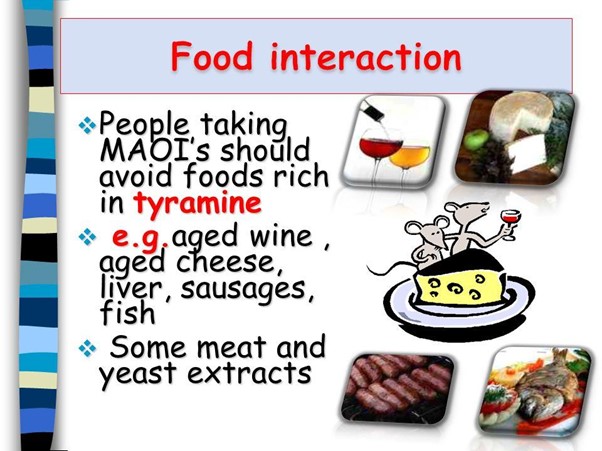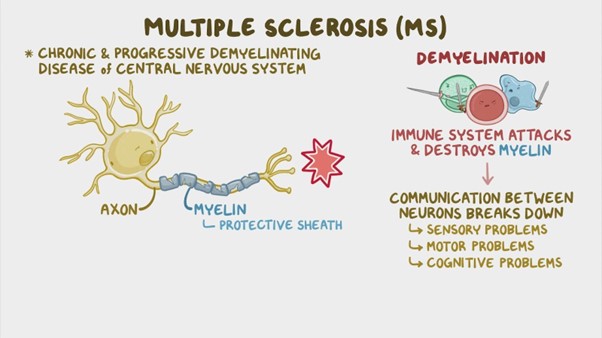A nurse is teaching a client who has a new prescription for an MAOI. Which of the following foods is contraindicated with this medication?
Cheese
Potatoes
Grapefruit
Eggs
The Correct Answer is A
Choice A reason:
Among the options listed, cheese is the food that is contraindicated with MAOI use. Cheese is high in tyramine, and consuming it while taking MAOIs can lead to a potentially life-threatening hypertensive crisis.
An MAOI (Monoamine Oxidase Inhibitor) is a type of medication used to treat depression, anxiety, and other psychiatric disorders. When taking MAOIs, it is important to avoid certain foods that contain high levels of tyramine, as it can lead to a dangerous increase in blood pressure known as a hypertensive crisis.
Choice B reason:
Potatoes: Potatoes are not contraindicated with MAOI use. They do not contain significant levels of tyramine.
Choice C reason:
Grapefruit: Grapefruit is not contraindicated with MAOI use. However, it can interact with certain medications, so it's always a good idea to check with the healthcare provider or pharmacist about specific medication interactions.
Choice D reason:
Eggs: Eggs are not contraindicated with MAOI use. Like potatoes, they do not contain significant levels of tyramine.

Nursing Test Bank
Naxlex Comprehensive Predictor Exams
Related Questions
Correct Answer is A
Explanation
A.Addressing parental concerns is crucial, especially for informed consent. If the parents are not comfortable or have unresolved questions, it could delay or prevent the surgery from proceeding.
B.While this blood pressure is slightly elevated, it is not an immediate concern that would typically prevent surgery.
C.Although severe pain is important to manage, it may not require immediate reporting unless it is unmanageable or indicates a serious problem.
D.While the lack of voiding in an immobile patient is a concern and could indicate urinary retention, it is not necessarily afinding that would prevent surgery.
Correct Answer is A
Explanation
Choice A reason:
"Use a cane when walking to maintain your balance" is the correct statement Multiple sclerosis (MS) is a chronic autoimmune condition that affects the central nervous system, leading to various neurological symptoms. Mobility and balance issues are common among individuals with MS, and using a cane can be helpful in providing stability and support while walking. It can also reduce the risk of falls and improve the client's overall safety and confidence when ambulating.
Choice B reason:
"Plan to take a hot bath once a week to reduce stress” is not appropriate statement. Heat sensitivity is a common symptom in individuals with MS, and exposure to heat, such as hot baths or saunas, can exacerbate MS symptoms. It is generally advisable for individuals with MS to avoid excessive heat exposure as it can worsen fatigue and other neurological symptoms.
Choice C reason:
"Engage in a rigorous exercise program to maintain muscle tone" is not appropriate. While exercise is beneficial for individuals with MS, particularly in maintaining muscle strength and flexibility, it is essential to avoid a rigorous or overly strenuous exercise program. High-intensity exercise may lead to increased fatigue and exacerbation of MS symptoms. A personalized exercise plan that considers the individual's specific abilities and limitations is recommended.
Choice D reason
"Place a scatter rug in your bathroom to prevent falling" is not appropriate statement. Placing a scatter rug in the bathroom is not advisable, especially for individuals with mobility and balance issues like those with MS. Scatter rugs can create tripping hazards and increase the risk of falls. It is essential to keep the bathroom floor clear and use non-slip mats to improve safety.

Whether you are a student looking to ace your exams or a practicing nurse seeking to enhance your expertise , our nursing education contents will empower you with the confidence and competence to make a difference in the lives of patients and become a respected leader in the healthcare field.
Visit Naxlex, invest in your future and unlock endless possibilities with our unparalleled nursing education contents today
Report Wrong Answer on the Current Question
Do you disagree with the answer? If yes, what is your expected answer? Explain.
Kindly be descriptive with the issue you are facing.
